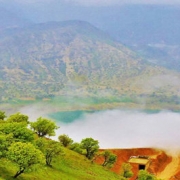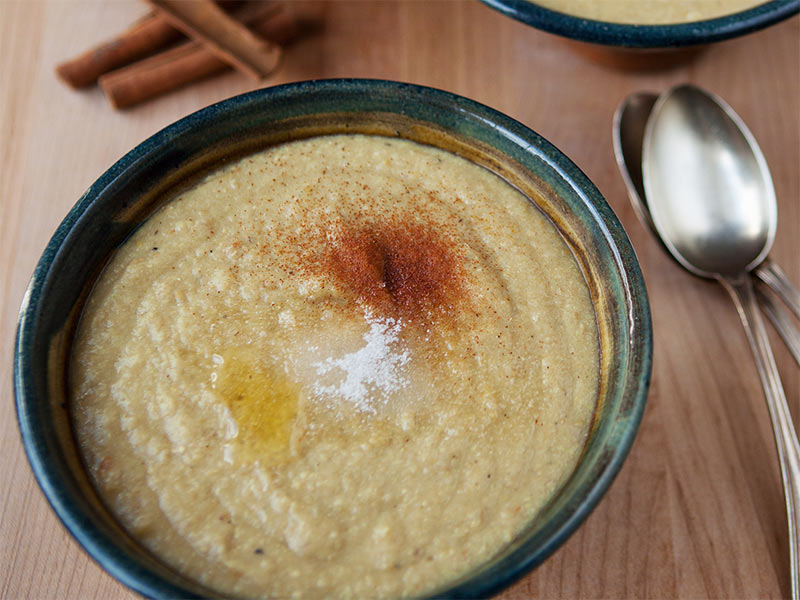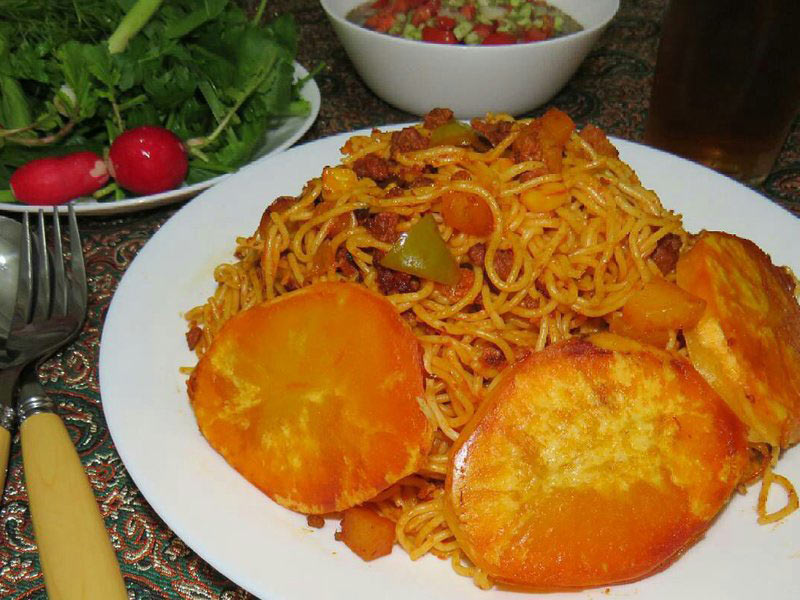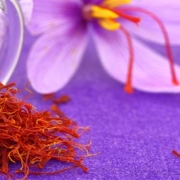Unlike the classic route of central Iran which tends to cross deserts, west of Iran, including the Zagros area, Kurdistan hills, and Khuzestan plain is so rich naturally and because of this excellence has always been populated during history, Which gives the second priority to the region: historically and culturally rich.
Khuzestan
The name of Khuzestan might remind of the Iran-Iraq war, but the history of civilization in Khuzestan dates back to more than 7000 years, to the Elamite period. The historical sights aside, the tropical nature of this region has a lot to offer to its visitors.
Chogha zanbil, The Elamite Ziggurat
Chogha zanbil ziggurat known as the Elamite religious center in Shush is the largest ziggurat outside of Mesopotamia and the best preserved of this type of stepped pyramidal monument from 1275-1240 BCE. The word “Chogha Zanbil” in the local language means “large basket-shaped hill.” This well-constructed monument is a dedicated from Untash Gal, the Elamite King to their gods Inshushinak and Naapirisha. The monument was built on five floors, with a height of around 50 meters at the time. The first glazed brick of the world in gold and turquoise was used in the decoration of the outside walls, on which the king personally left a message for you: “I Untash Gal, carved the golden bricks and set up home for the gods and I have dedicated this sacred place. May my work which is a gift to the Gods Gal and Inshushinak be accepted.”

Choghazanbil ziggurat, the Elamite religious center in Shush, and the largest ziggurat outside of Mesopotamia – West of Iran.
Shushtar Historical Hydraulic System
Intelligently constructed hydraulic systems of Shushtar including water mills, dams, tunnels were used for optimal use of water in ancient times. This aquatic structure which is considered one of the unique works of the Achaemenid period gives good information and statistics from ancient Iran. The first of the Shushtar aqueduct was built by Cyrus the Great in current Khuzestan. The Achaemenid era can be considered the culmination of Iranian civilization, art, and science. They built this industrial and aquatic structure with very precise engineering to overcome the power of nature. It was repeatedly rebuilt during the Sassanid, Seljuk, Qajar, and even Pahlavi periods. But a massive flood eventually destroyed a huge part of the structure in 1963. One of the most important architectural uses of Shushtar water structures was the diversion of Karun water to the other side. This was done in a fine manner and the floor of the creek was well sealed so that its bed would not be destroyed over time. The water would then have to collect behind a high barrier and eventually pass through the holes created on the rock and the Achaemenid plaster.

This aquatic structure which is considered one of the unique works of the Achaemenid period
The ritual ceremony of Mandaean in July
Not all Khuzestan citizens are Arab or Shiit. At the edge of the Karoon River, lives the ethnoreligious group called “Sabin” and also “Mandaean” who are adherents of John the Baptist. The public beliefs of Mandaean consider the natural fluid water as the sacred element which is a symbol of purity and cleaning impurities and guilt, that’s why Mandaeans say their prayers in sunrise and sunset beside Karoon river. Every year on 19 July Mandaean celebrates their new year’s eve which is their sacred day since it is considered as the nativity of Adam. On the mentioned day Sabein wears The white ceremonial robes and performs their baptism rite by immersing themselves in the river. It worth always participating in ritual ceremonies.

Mandaeans believe that fluid water is a symbol of purity and cleans impurities and guilt.
Apadana, the Palace of Darius in Susa
The palace was built by the order of Darius the Great, the Achaemenid king, in about 515-521 BC in Susa on the remained parts of Elamite artifacts. The walls of the palace are made of clay and its columns are made of stone. If we drive 40 km from Andimeshk on a lush and beautiful road, we will reach the city of Shush, which is one of the oldest cities in the world. Archaeological excavations show that the area was inhabited by farmers in 9000 BC. In 5,000 BC, people lived in the castle, and since 4,000 years ago, it has been the first place on earth to create urban life. As a noticeable point in the excavations of Apadana Palace, we can mention the discovery of an inscription related to the reign of Darius, which is written an inscription from the words of Darius describes the process of construction of Apadana Palace.

Apadana, the Palace of Darius in Susa
Ritual Arabic coffee drinking in Mozif
The literal meaning of “Mozif” is “the place of celebration”. As the guests are highly respected and sacred in Arabic culture, our Arab compatriots in Khuzestan build up some arched shaped rooms made of straw to host people for coffee drinking ceremonies. There are no doors in the entrance of Mozifs which means everyone is welcome. The coffee making and serving have a particular formality. For instance, when coffee is poured, the guest should drink it instantly without putting it down to show his respect, and shaking the cup means that the guest wants no more coffee. but that’s not all, there is a lot to learn before going to Mozif.

There are no doors in the entrance of Mozifs which means everyone is welcome.
Dehdez, The tropical paradise
If you felt like “Enough for history” in your Khuzestan trip, just take your backpack and go for a cool adventure in Dehdez riverside strict. Zeras is among the most amazing villages in Dehdez which is called “lost paradise”. Tucked between the green mountain ranges, the blue lake of Zeras offers a landscape like “get away from it all”. Surrounded by palm trees and green hills, just don’t sit on the sidelines watching people have fun. There a lot to do in Zeras: you can fish, hike, swim jet around the Lake, ride the boat, and use the water complex. You’ve got 2 choices for setting your camp, on the green hills if the day wasn’t too hot and the humidity doesn’t bother, or getting back to the village and pick your own picturesque view. Zeras would be the best to travel in the first half-year period, especially from April to June.

Tucked between the green mountain ranges, the blue lake of Zeras offers a great landscape in the west of Iran.
The cuisine of Khuzistan
The Arabic coffee of Khuzestan aside, the other must-taste of the region is “Ghaliyeh Mahi” which is a delicious spicy chopped fish baked in vegetables.
Lorestan
Falak-ol-aflak castle
Atop an ancient hill in Khoramabad is located Falak-ol-aflak castle, known as the engineering and architectural masterpiece and which is registered in the list of Iran’s National Heritage. Although the original date of construction of the castle is yet unknown it’s been speculated that Shapur Sassanid is the founder. This hexagonal building was used as a military fortress, treasury, and prison for centuries after the Sassanid area up to the Qajar period. When Alexander invaded Iran, the rulers of the time decided to hide valuable gold and silver objects in them and thus protect them from Alexander. Two thousand years later, antiques were accidentally found by thieves and are now preserved in the Anthropological Museum of the castle. The visiting hour change in different seasons but it is almost possible every day from 9:00 to 17:00.

Falakolaflak castle, known as the engineering and architectural Sassanid masterpiece.
Azna snow tunnel
My highest recommendation for adventurers during spring and summer would definitely be the Azna snow tunnel. The Lorestan province has snowy winters, the accumulation of tons of snow in Oshtorankuh over many years, has formed this spectacular natural wonder in Azna area. Huge masses of snow accumulate in the winter and as the weather warms up in the spring and summer, the snow masse starts to melt slightly which makes a hole in it and forms the snow tunnel. Azna valley gives the chance to experience strolling through an 800 meters snow tunnel while the melting drops whisper and the froze strokes the face skin.
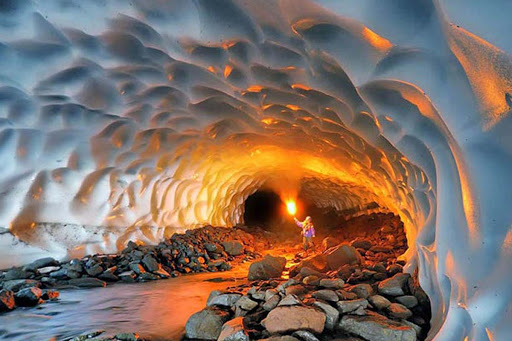
Khazineh valley
“Darreh Khazineh” or “Khazineh Valley” is located near the namesake village in Lorestan Province in the west of Iran. Although it gets a little chilly in fall and winter, summers are gloriously temperate affairs in Lorestan. So many people claim that Khazineh valley and Grand Canyon could be twins in another world, well who knows! The spectacular stone forms, shaped by erosion in this valley enchants every visitor. Then check your camera twice before leaving for Lorestan!

Khazineh valley is called the Iranian twin of Grand Canyon.
Kurdistan
The Kurdistan Region located in the west of Iran embraces three provinces: Kurdistan, Kermanshah, and Ilam, the majority of people in these provinces are Kurdish and culturally so close, here are the most remarkable sights to visit in the great region of Kurdistan :
Taq-E Bostan
“Taq-E Bostan” or “The Arch of the Garden” is a collection of inscriptions and rock paintings from the Sassanid period, which is located five kilometers northwest of Kermanshah. These inscriptions picturing the coronations of several Sassanid kings such as Khosrow Parviz, Ardashir II, Shahpur II, and Shahpur III, remained almost 1800 years. Being located on the path of the silk road and the and the agreeable climate and nature made the Tagh_E Bostan region very populated and persuaded the kings to make carve their inscription there, why don’t we call it the royal billboard then?
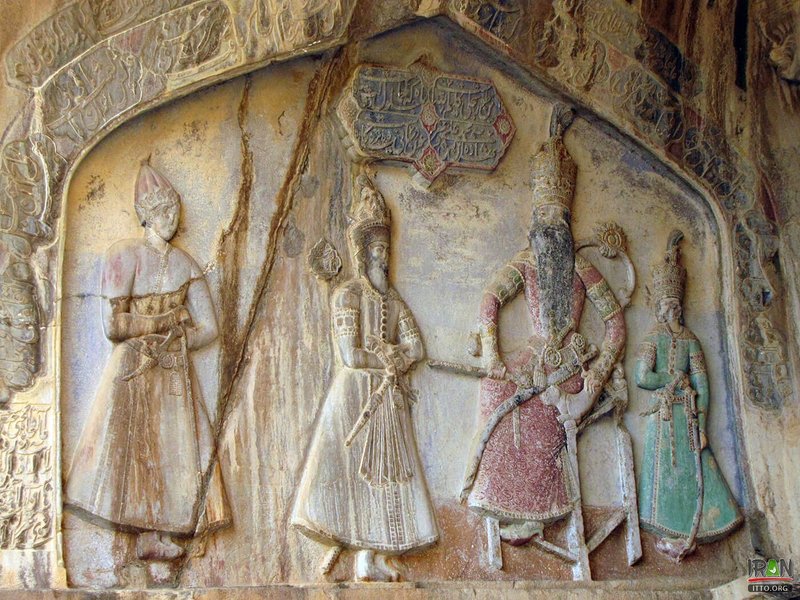
A collection of inscriptions and rock paintings in Tagh-e Bostan, West of Iran
Uraman Takht
Located in the green mountains of Kurdistan, this hilltop village, is famous for its stunning nature as well as ritualistic music, dance, and ceremonies. The greatest event which takes place in Uraman Takht is the wedding of “Pir Shalyar”.

PirShaliyar festival is a festival in the west of Iran held by playing rhythmic music, singing religious chants, and doing ritualistic dances.
This musical festival is held twice a year in mid-spring and mid-winter, for 950 years, in honor of a wise old man, called “Pir Shalyar”.The legends say that the King of Bukhara had a deaf-mute daughter. The more he sought the cure for her, the less he found it. The king decided to send the princess “Shah Bahar Khatoon” to Kurdistan, to find the cure. When she arrived in Howraman, Pir Shalyar healed her with his special powers and married her. the midwinter festival is the anniversary of their marriage. Which takes place by a group of Dervishes, playing rhythmic music, singing religious chants, and doing ritualistic dances.
Are you planning to travel to Iran? Check out our Iran tours.



